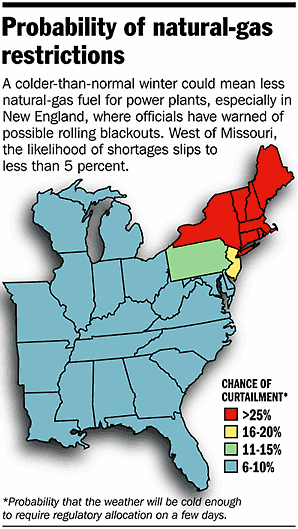Energy Sector Remains Attractive
by Joseph Dancy, LSGI Advisors, Inc.
Portfolio Manager, LSGI Fund
Adjunct Professor, SMU School of Law
December 6th, 2005
The 2005 Atlantic hurricane season was one of the most ferocious on record. November disturbances gave us 26 named tropical storms for the season just ended. The previous record - 21 storms - was set in 1933.
Of those 26 tropical storms 14 become hurricanes, breaking the old record of 12 set in 1969. Three of these became intense category 5 hurricanes with winds of at least 175 miles per hour – winds almost tornado like in speed and destructive force - something never seen before in one season.
All of which is significant to the U.S. economy since 20% of our natural gas supplies and 25% of crude oil production originate from the Gulf of Mexico – and storms tend to interrupt, if not destroy, production capability.
In the wake of the tropical storms and hurricanes 36% of crude oil production and 29% of natural gas production in the Gulf of Mexico remain offline. In addition, roughly 40% of onshore Louisiana natural gas production remains offline.
The 2005 hurricane season also brought us Katrina - the costliest hurricane in history. With an official death toll of 1,302 and damage estimated at $100 billion, Katrina was not only the costliest hurricane in U.S. history but was also the third deadliest, behind the 1900 storm that killed an estimated 8,000 people at Galveston, and a 1928 hurricane that claimed 1,836 in South Florida.
While energy prices will be volatile, due to the storm damage we remain bullish and expect the energy sector will continue to perform well for the following reasons:

- The number of rigs drilling for oil and natural gas in North America increased to 2,122 last week, an increase from 1,713 in the year ago period. Crude oil futures prices were $57.20 per barrel, compared to $42.40 in the year ago period. Natural gas futures prices were $11.99 per thousand cubic feet versus $7.60 in the year earlier period.
All indicate that investor interest in the energy sector continues, massive amounts of capital will be required to repair Gulf of Mexico facilities damaged by the hurricanes, and production and exploration activities should prove to be highly profitable for most companies.
- Roughly 23% of America's electricity-generating capacity is fueled by natural gas according to a recent report. In New England fully 40% of electricity is drawn from natural-gas-fired power plants, up from just 17% in 1999. At least 22 natural gas fired plants have been built in the New England region since the late 1990s - a major new source of demand for this environmentally friendly fuel.
- If the Eastern U.S. has a cold winter as projected by many long term forecasters, the likelihood of natural gas supply interruptions is estimated as high as 30% in the Northeast. Chances of an interruption are 10% as far south as Florida and as far west as Missouri, according to a recent report by the Interstate Natural Gas Association of America (INGAA), a trade association representing gas pipeline companies.
In a "worst-case" scenario, chances of interrupted gas rise to 40% for the Northeast and 25% across the eastern seaboard (chart at right from Christian Science Monitor).
- China's demand for imported crude oil in the first 10 months of 2005 increased by 5.7% over year earlier levels, and imports are projected to increase by roughly 6% in 2006. China's economy is expected to grow by 9.3% in 2005, and 8.7% for 2006 according to a World Bank study released last month, based on strong domestic demand and surging exports. It was the third time in the last year the Bank raised its growth forecast. Longer term as Asian economies continue to modernize and grow they will require higher energy inputs.
- According to statements by officials last month, China might start importing oil to fill its planned strategic petroleum reserve and will consider a rapid build up in commercially held refined oil stockpiles. The remarks represent a significant change in oil policy, at a time when global oil markets are already strained due to a tight oil supply-demand balance.
-
Last month AccuWeather released its 30-day and 90-day long term temperature and precipitation forecast for the period beginning December 1st. For the upcoming one- to three-month period the Northeast U.S., heavily reliant on heating oil, faces a colder-than-normal winter. This will place further strain on consumers who are already wrestling with the higher energy prices (see map at right).

Due to the long term trends we remain heavily invested in the energy sector, and expect the sector and firms to continue to reap the benefits of the higher product prices and increased activity.
Contact Information
Joseph Dancy, Adjunct Professor
Oil & Gas Law, SMU School of Law
Advisor, LSGI Market Letter
Email l Website


